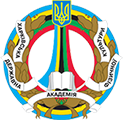- Головна сторінка
- →
- Періодичні видання
- →
- Слобожанський науково-спортивний вісник
- →
- Перегляд матеріалів
JavaScript is disabled for your browser. Some features of this site may not work without it.
Показати скорочений опис матеріалу
| dc.contributor.author | Vyacheslav, Romanenko | |
| dc.contributor.author | Svitlana, Рiatysotska | |
| dc.contributor.author | Andrii, Lytvynenko | |
| dc.contributor.author | Maksim, Baibikov | |
| dc.contributor.author | Natalya, Boychenko | |
| dc.contributor.author | Ponomarov, Viktor | |
| dc.date.accessioned | 2024-07-01T09:32:17Z | |
| dc.date.available | 2024-07-01T09:32:17Z | |
| dc.date.issued | 2024-06-30 | |
| dc.identifier.citation | Vyacheslav Romanenko, Svitlana Рiatysotska, Andrii Lytvynenko, Maksim Baibikov, Natalya Boychenko, & Viktor Ponomarov. (2024). Methodology for assessing the reaction of combat athletes to a moving object. Slobozhanskyi Herald of Science and Sport, 28(2), 69-77. https://doi.org/10.15391/snsv.2024-2.003 | uk |
| dc.identifier.issn | 1991-0177 | |
| dc.identifier.uri | http://repo.khdafk.com.ua/xmlui/handle/123456789/487 | |
| dc.description.abstract | The purpose of the study is to develop and test the method of evaluating the reaction to a moving object of combat athletes using computer technologies. Material and methods. Representatives of Taekwon-Do ITF with qualifications 4 Gup – 1 Dan (first stage of the study: n=32, 15.9±0.56 years) and representatives of Cossack Fight of medium qualification (second stage of the study: n=20, 18.0±0.17 years). At the first stage of the study was developed the computer program “Reaction RMO Pro” to assess the reaction to a moving object. The athlete performer is asked to complete a test exercise over three stages, where the complexity of the tasks gradually increases. At the second stage of the study the reliability, validity and reliability of the proposed methodology were determined. To activate the sensory and motor mechanisms of movement control, before testing, athletes were asked to perform simple exercises with tennis balls. The second measurement was taken three weeks later. Results. For preliminary testing, software modeling of various situations of test tasks was carried out. For a detailed characterization of the obtained data, a cluster analysis was carried out and three groups of athletes can be distinguished/ The first group (G1) included athletes (14.6±0.28 years), who had the highest reaction time and predominantly premature reactions. The second group (G2) included athletes (15.6±0.90 years) with an average reaction time and predominantly delayed reactions (Delayed: 49.03%). The third group (G3) included athletes (17.8±1.34 years) who had the lowest reaction time and predominantly premature reactions (Premature: 52.45%). Analysis of changes in reaction time at individual stages of the test showed that the best reaction time was noted at the second stage of the test, where the speed of the visual stimulus increases. The worst time was recorded in the first stage of the test. At the third stage, where interfering signals act, the reaction time is less than at the first stage, but longer than at the second. Analysis of the results of determining the direction of reactions to a moving object indicates that premature reactions predominate, both in the first measurement (52.75%) and in the second (51.92%). Conclusions. The highly qualified athletes have a more advanced mechanism for perceiving information and corresponding motor reactions. the method for determining reaction time to a moving object using the computer program “Reaction RMO Pro” is reliable, valid and reliable, as evidenced by the results of correlation analysis (r = 0.78), the absence of differences between the first and second measurements, both at individual stages of the test (p>0.05), and relative to the integral assessment of reaction time to a moving object (t=0.35, p>0.05), preservation of the dynamics of changes in reaction time at individual stages of the test and the predominant direction of premature reactions (first measurement 52.75% , second 51.92%). | uk |
| dc.language.iso | en | uk |
| dc.publisher | Слобожанський науково-спортивний вісник | uk |
| dc.relation.ispartofseries | 28 (2); | |
| dc.subject | sensorimotor reactions, martial arts, highly qualified athletes, computer technologies | uk |
| dc.title | Methodology for assessing the reaction of combat athletes to a moving object | uk |
| dc.type | Article | uk |
Долучені файли
Даний матеріал зустрічається у наступних розділах
-
Слобожанський науково-спортивний вісник
Журнал містить статті, що відображають матеріали сучасних наукових досліджень у галузі фізичної культури та спорту

